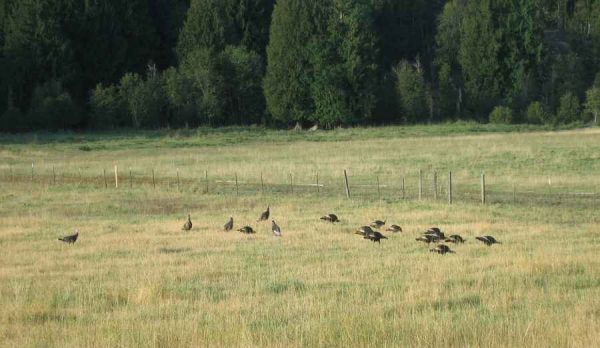

(Several hunting sites also report shootings of “cinnamon phase” turkeys, which may be a nickname for the red morph.) Photos posted online by hunters suggest that vibrant, rust-red tail feathers can be a giveaway. It's also much harder to identify, in part because your standard Wild Turkey plumage also has reddish undertones, and as a result we don't know much about them. Much rarer than the smoke morph is the erythristic, or red, variety of this bird. “You'd think I would have encountered at least one male.” Why this pattern exists-whether related to genetics, attention from predators, or other factors-is not known. “I find that odd because I know I've seen more than 100 smoke-phase birds over the years,” he writes.

In a 2011 column for the Minnesota Star-Tribune, outdoors photographer Bill Marchel says he has “never positively identified a smoke-phase tom turkey” over the course of years observing the birds in the wild. Of those smoke-phase survivors that make it into adulthood, most or all seem to be female.

The lighter color stands out in a flock, making individuals easy targets for predators and coveted trophies for some hunters. While pretty, this rare plumage doesn't necessarily help the birds. A smoke-morph bird looks like its name suggests, with a light wispy gray with graphite and black details along the body, wings, and tail. Despite the dramatic monochrome look, this turkey still has some blue and pink coloration on its head and neck, but not nearly as much as on a standard Wild Turkey. Smoke is the most common Wild Turkey morph: Biologists estimate 1 in every 100 Wild Turkeys has this muted coloration. “It is just a genetic mutation that shows up periodically and can be persistent in a local area.” These rare turkey varieties are caused by genetic mutations passed from one generation to the next. This heredity means that certain morphs can become more abundant in certain regions, wherever the genetic variants arise. “It does occur naturally, and it’s also not indicative or associated with interbreeding with domestic turkeys,” Hatfield says. Although many people colloquially call them “phases,” these colorations aren’t temporary looks according to Mark Hatfield, staff biologist at the National Wild Turkey Foundation, “they were born that way, and they will stay that way.” They also come in four limited-edition colors, or morphs: smoke, red, black, and white. Now you can find them not only browsing the forest understory but also intimidating suburbanites in streets, driveways, and backyards. The birds are unmistakable their signature plump shape, bald heads, and reddish-brown plumage are well known even to casual naturalists throughout the Lower 48.īut not all Wild Turkeys sport this classic chestnut look. Once decimated across the continent, the gobbler’s population has boomed in recent decades. It wasn't always as easy to spot a Wild Turkey as it is today.


 0 kommentar(er)
0 kommentar(er)
